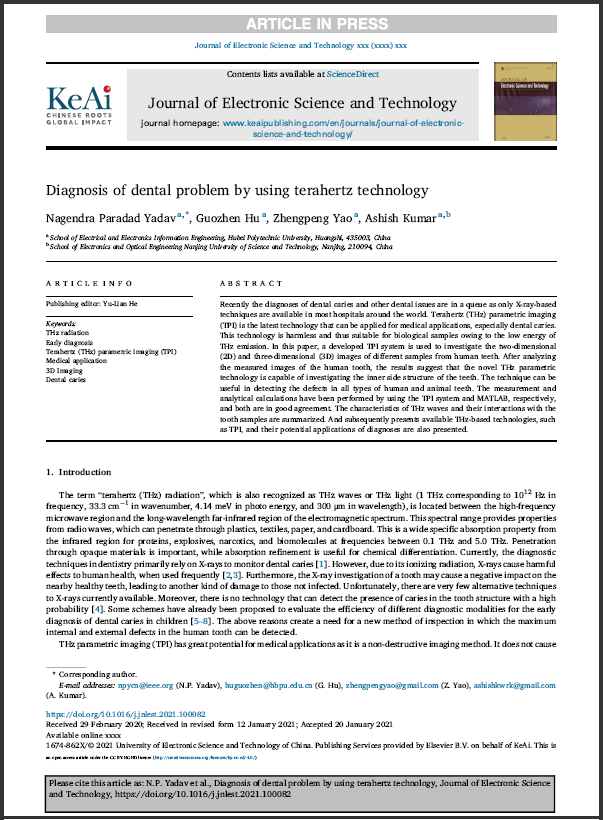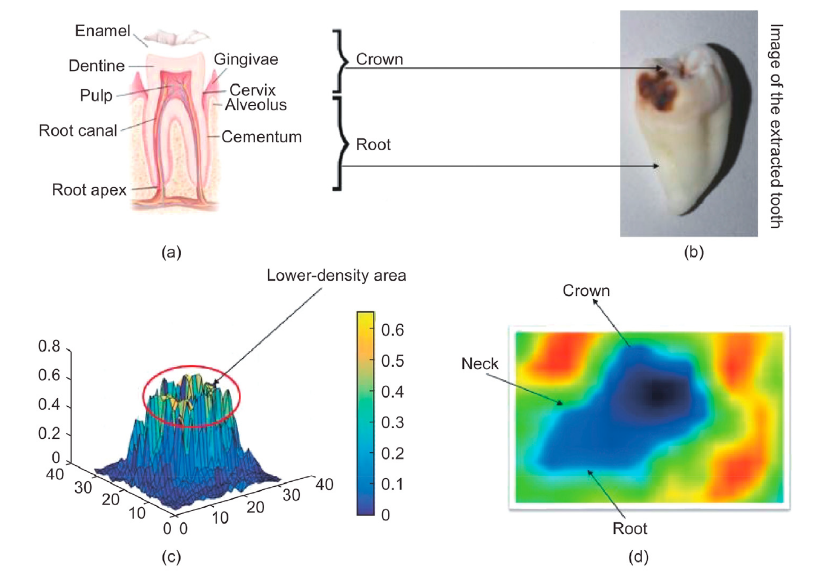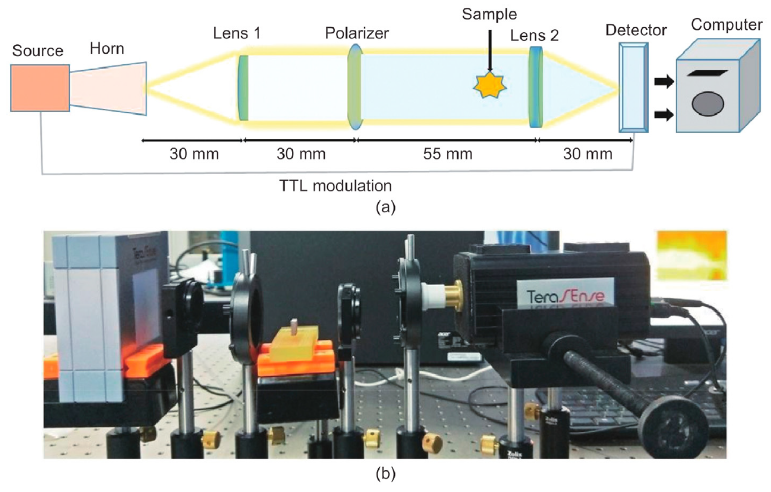Terahertz imaging technology is an innovative tool for medical diagnostics of dental caries that can potentially substitute X-ray techniques
 Terahertz imaging technology developed and patent protected by TERASENSE has proven a useful tool for non-destructive / non-invasive inspection in many applications dealing with various dielectric materials, many of which are transparent for THz rays. Due to its non-ionizing properties THz radiation is believed to be much safer for use in the inner imaging of various samples, including those dealing with medical applications for diagnostics of certain diseases in the human body, in particular, in dentistry and dental applications. We all know that it is X-ray-based techniques that are still widely used for such purposes in most hospitals around the world. However, due to its high energy and ionizing radiation X-rays may cause harmful effects to human health, when used frequently, while the X-ray investigation of a tooth may cause a negative impact on the nearby healthy teeth, leading to the damage to those not infected.
Terahertz imaging technology developed and patent protected by TERASENSE has proven a useful tool for non-destructive / non-invasive inspection in many applications dealing with various dielectric materials, many of which are transparent for THz rays. Due to its non-ionizing properties THz radiation is believed to be much safer for use in the inner imaging of various samples, including those dealing with medical applications for diagnostics of certain diseases in the human body, in particular, in dentistry and dental applications. We all know that it is X-ray-based techniques that are still widely used for such purposes in most hospitals around the world. However, due to its high energy and ionizing radiation X-rays may cause harmful effects to human health, when used frequently, while the X-ray investigation of a tooth may cause a negative impact on the nearby healthy teeth, leading to the damage to those not infected.
Well, this is where THz imaging comes in. A group of scientists lead by Dr. Nagendra Paradad Yadav and representing School of Electrical and Electronics Information Engineering, Hubei Polytechnic University, Huangshi and School of Electronics and Optical Engineering Nanjing University of Science and Technology, Nanjing, China decided to purchase the whole set of Terasense equipment to show how this technique can be applied for medical applications, especially dental caries and prove that it is capable of investigating the inner side structure of the teeth.
For their setup they chose our Tera-1024 (32x32) THz imaging camera (with sensor array 32x32 pixels) and a few fixed frequency 100GHz wave sources with different output power ranging from 80mW up to 400mW a couple THz lenses and some other optical accessories as described in the article.
 Let’s give them a credit, these guys did an excellent job and their experiments yielded good results proving that THz imaging technique -or Terahertz parametric imaging (TPI ) as our clients call it- can be useful in detecting the defects in all types of human and animal teeth. In short, the defect (caries) tends to significantly change the refractive index and absorption spectra, which suggests that the tooth is affected by caries and THz techniques can be an invaluable tool in dentistry. Of course, you are welcome to read the whole scientific article dedicated to this research, which was entitled “Diagnosis of dental problem by using terahertz technology” and was published in the Journal of Electronic Science and Technology ( https://doi.org/10.1016/j.jnlest.2021.100082).
Let’s give them a credit, these guys did an excellent job and their experiments yielded good results proving that THz imaging technique -or Terahertz parametric imaging (TPI ) as our clients call it- can be useful in detecting the defects in all types of human and animal teeth. In short, the defect (caries) tends to significantly change the refractive index and absorption spectra, which suggests that the tooth is affected by caries and THz techniques can be an invaluable tool in dentistry. Of course, you are welcome to read the whole scientific article dedicated to this research, which was entitled “Diagnosis of dental problem by using terahertz technology” and was published in the Journal of Electronic Science and Technology ( https://doi.org/10.1016/j.jnlest.2021.100082).
It is remarkable to point out the experimental setup the researchers used in addition to THz camera (sensor array) , THz source and a few THz lenses included a POL-HDPE-OD polarizer with a diameter of 50 mm and a frequency range of 0.01 THz to 30 THz. This component also proved useful as all our sensor arrays (both 2D and linear 1D ) are polarization sensitive which may impact the resultant THz image. There is no doubt that it would be worthwhile reading this article only for the sake of a detailed description of each equipment element of experimental setup and its intended purpose. Moreover, they shared the results of imaging analysis of both two-dimensional (2D) and three-dimensional (3D) images of different samples from human teeth and their measurement and analytical calculations performed by using the TPI system and MATLAB, respectively, which apparently are in good agreement with each other.
In conclusion , we are highly grateful for the initiative taken by group of scientists including Dr. Guozhen Hu, Dr. Zhengpeng Yao , Dr Ashish Kumar headed by Dr. Nagendra Paradad Yadav that enabled a profound feasibility check one more promising application of THz parametric imaging technology. We encourage other clients to go in the wake and follow their lead in acquiring their own experimental setups of our THz imaging systems for their own in-house checks of other promising applications.
